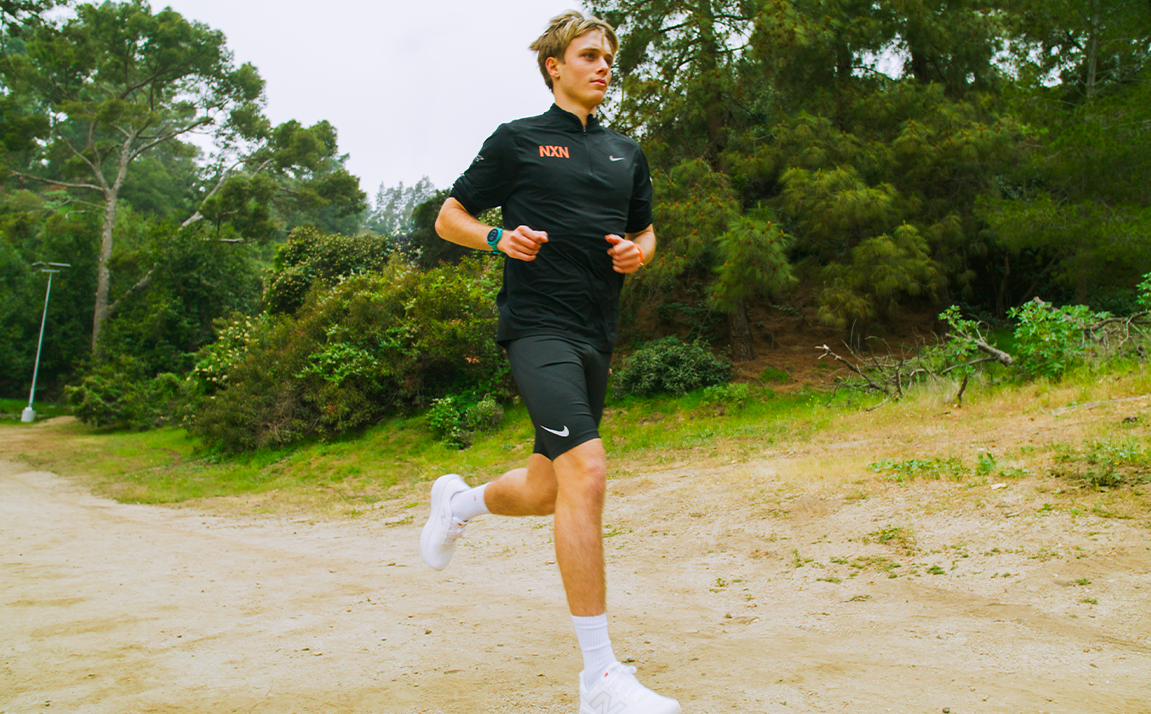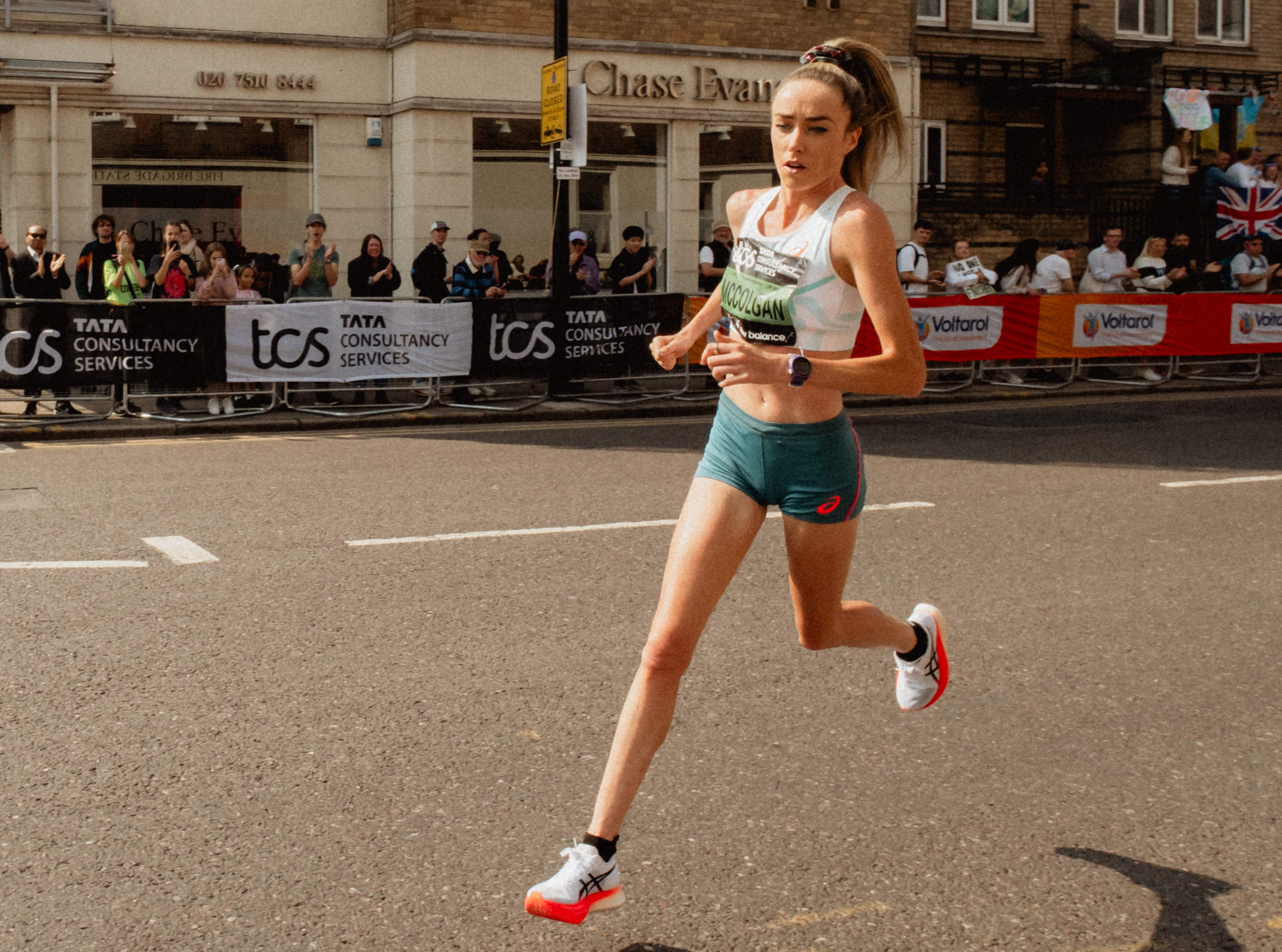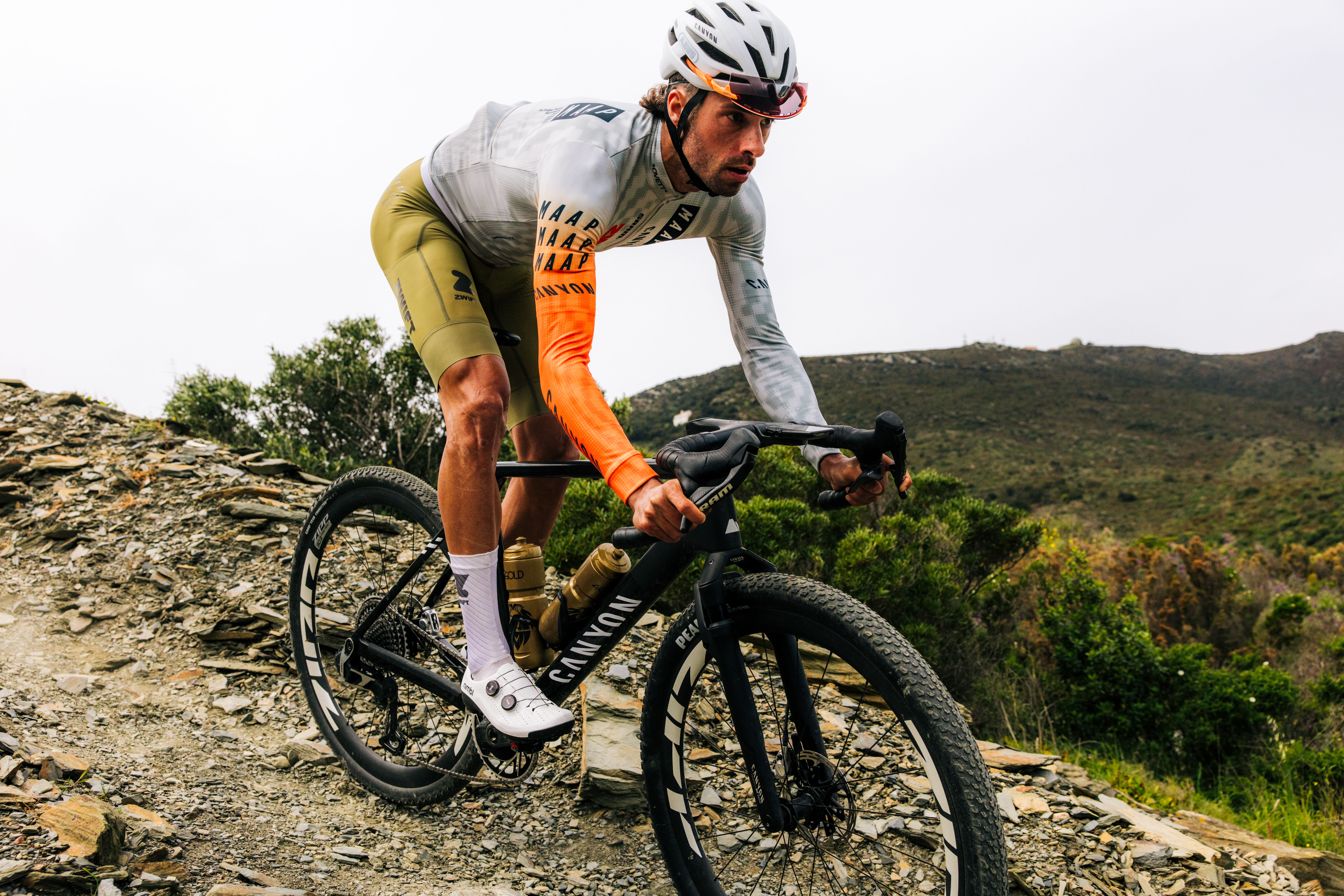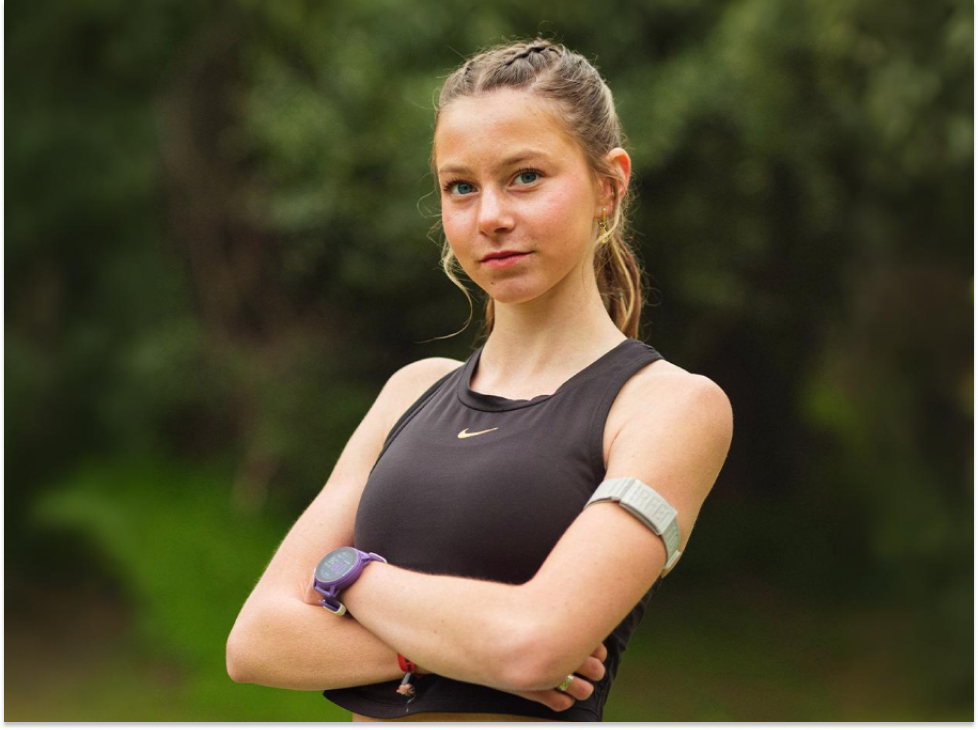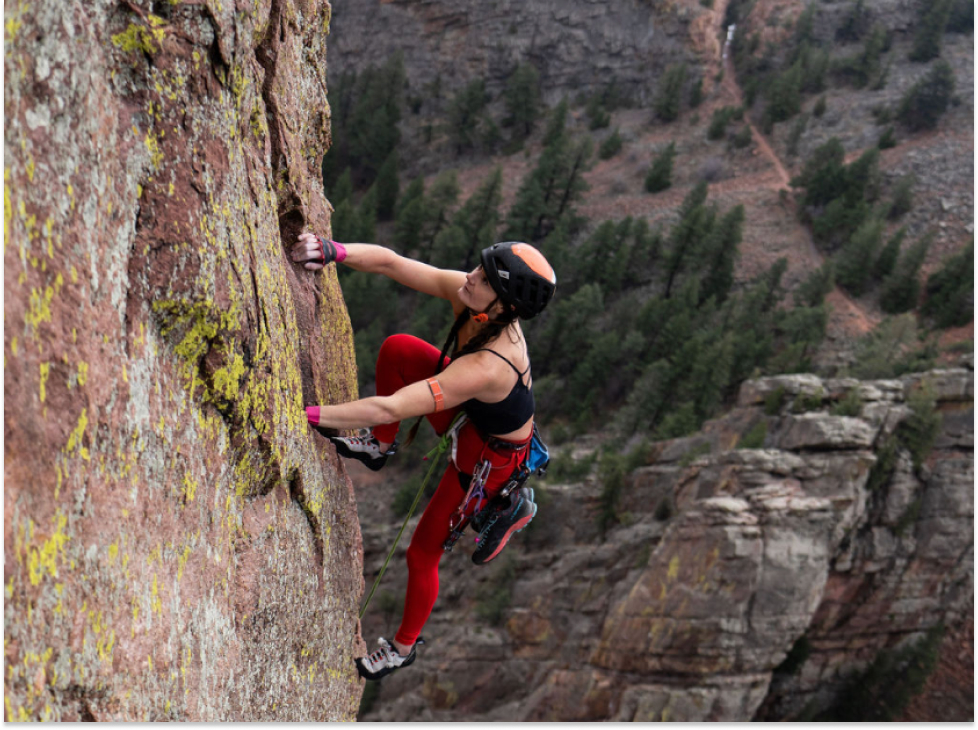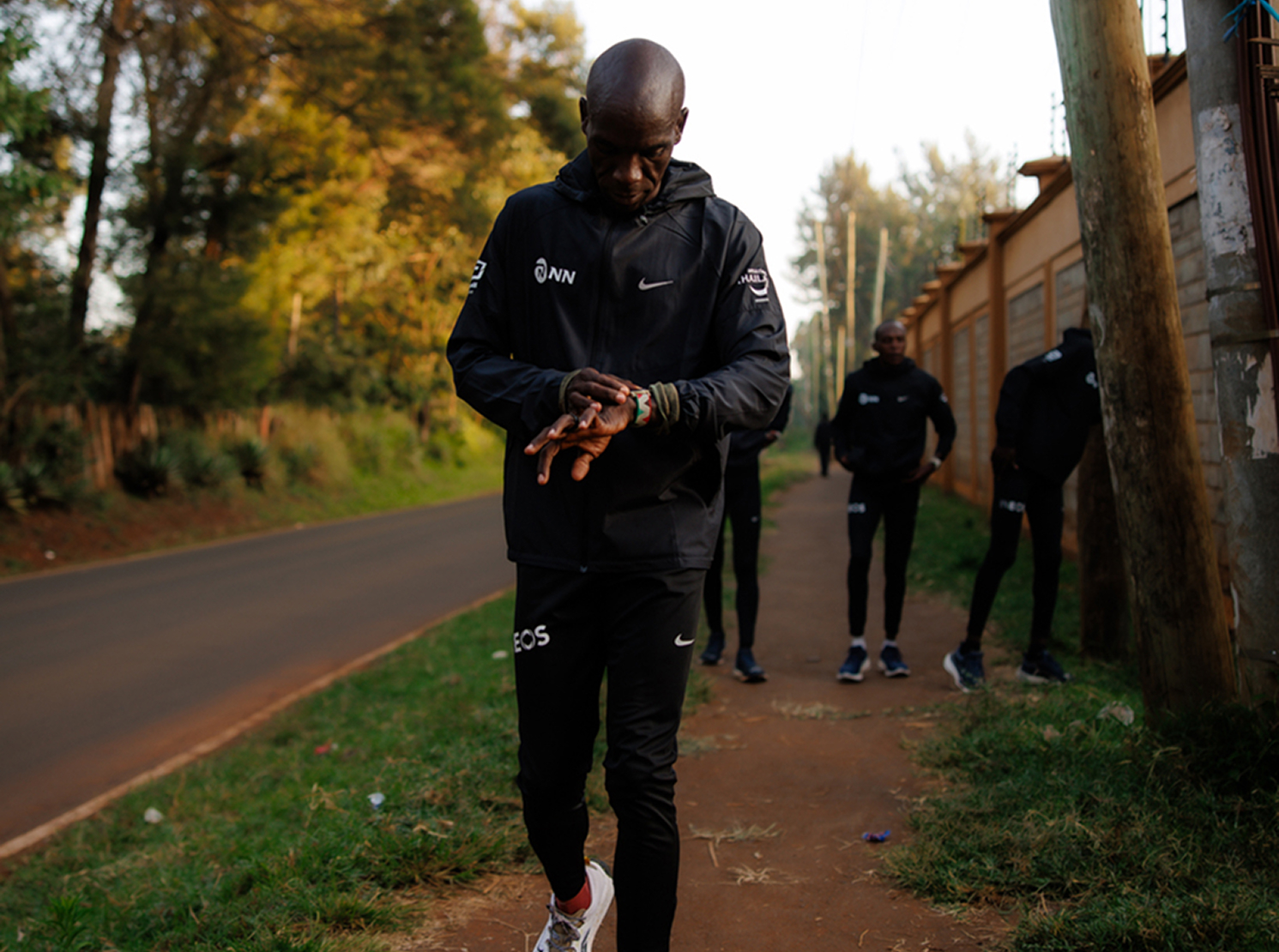OCC (55km) is known for being the fastest of all the UTMB World Series Finals. With CCC being 100km and UTMB being 100 miles, OCC is generally reserved for those athletes who want to run mountainous trail events but run them fast! At the 2023 OCC Final, Anna Comet Pascua finished as the 11th overall female and secured the top place for all women aged 40-44. Below is a look at Anna's training throughout 2023 that has led to this amazing performance, along with a detailed look at her 2023 OCC performance!
Watch: APEX 2 PRO Chamonix Edition
Analysis Tool: COROS Training Hub
2023 Training
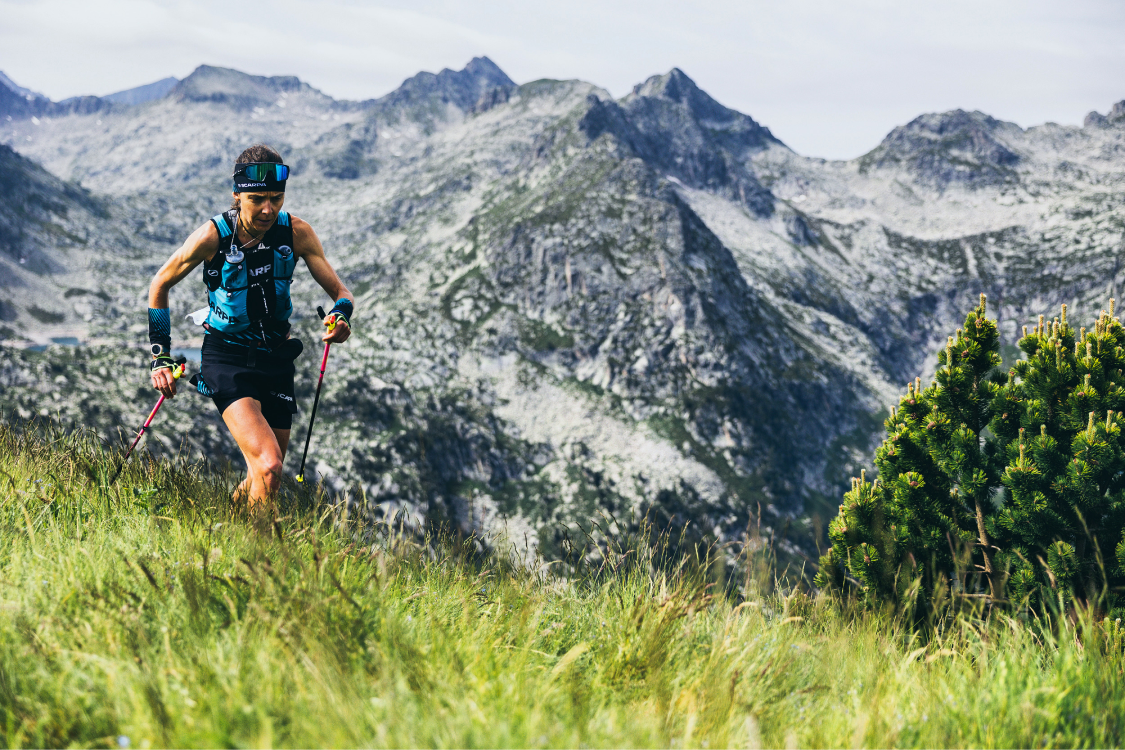
In order to finish as the top 40-44-year-old globally, and put yourself on the start line with the best athletes in the world, training must be a constant priority. Anna put her training on full display at the 2023 OCC Final, and COROS is here to break it down. Below you will find Anna's season-long fitness trend, the intensity of her training, and how she dialed in her taper by utilizing data.
Base Fitness
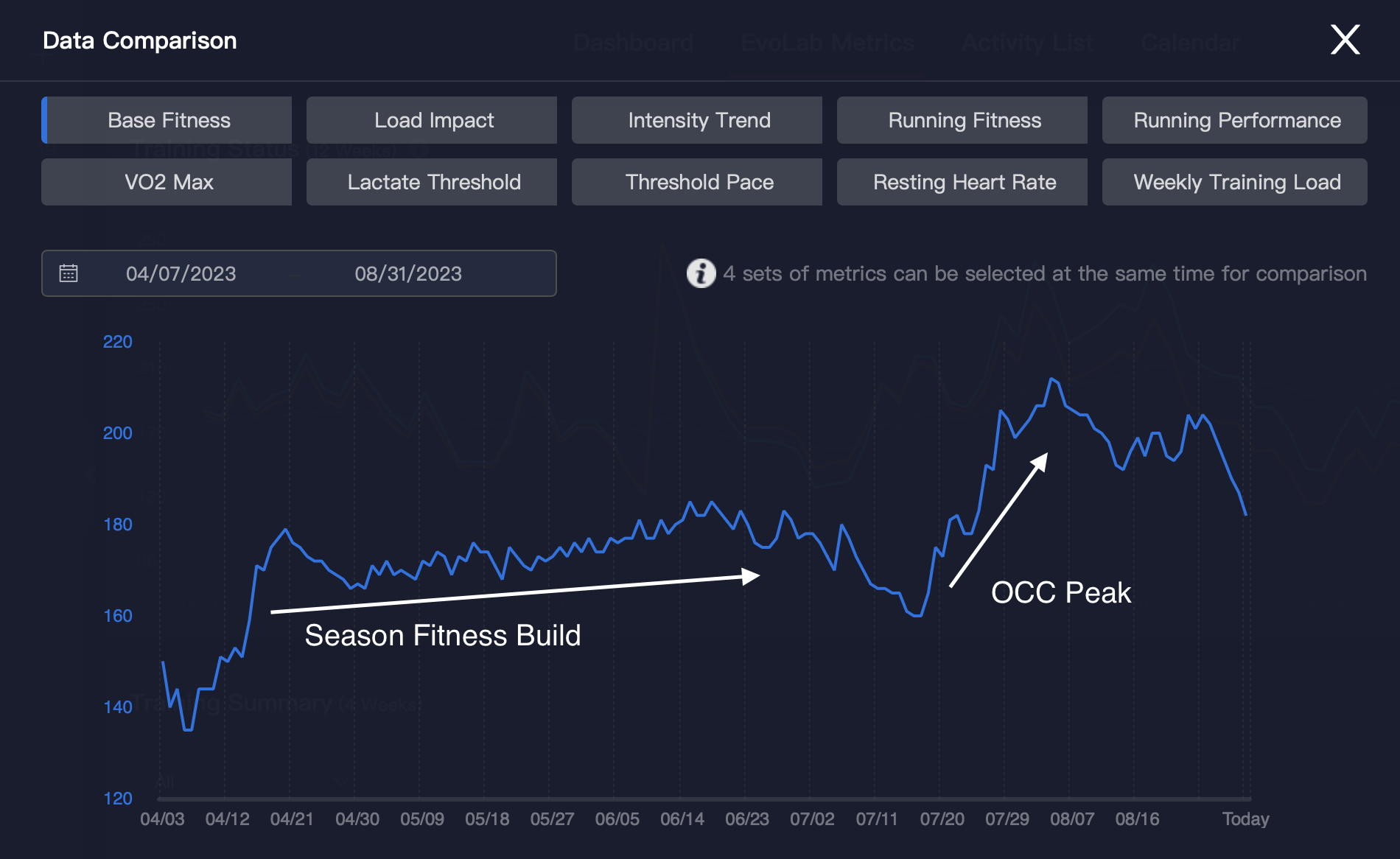
Base Fitness tracks your daily training load over a 42-day average.
Base Fitness is a fantastic tool to help athletes understand trends in fitness. The metric takes a 42-day rolling average of your training load (daily workout stress) and puts it into a graph showing your overall fitness. As can be seen above, Anna went into her season-long fitness build starting in mid-April and extended that through July when she took a bit of recovery time (following a race). Coming out of this recovery, Anna was able to ramp up training quickly to prepare her body for OCC. Peaking at 212 on August 4th, Anna then began a light maintenance phase leading into her taper. For all athletes curious about whether their fitness is trending up or down, this tool can help you understand if you are building heading into race day and what is needed in your daily workouts to improve.
Intensity of Training
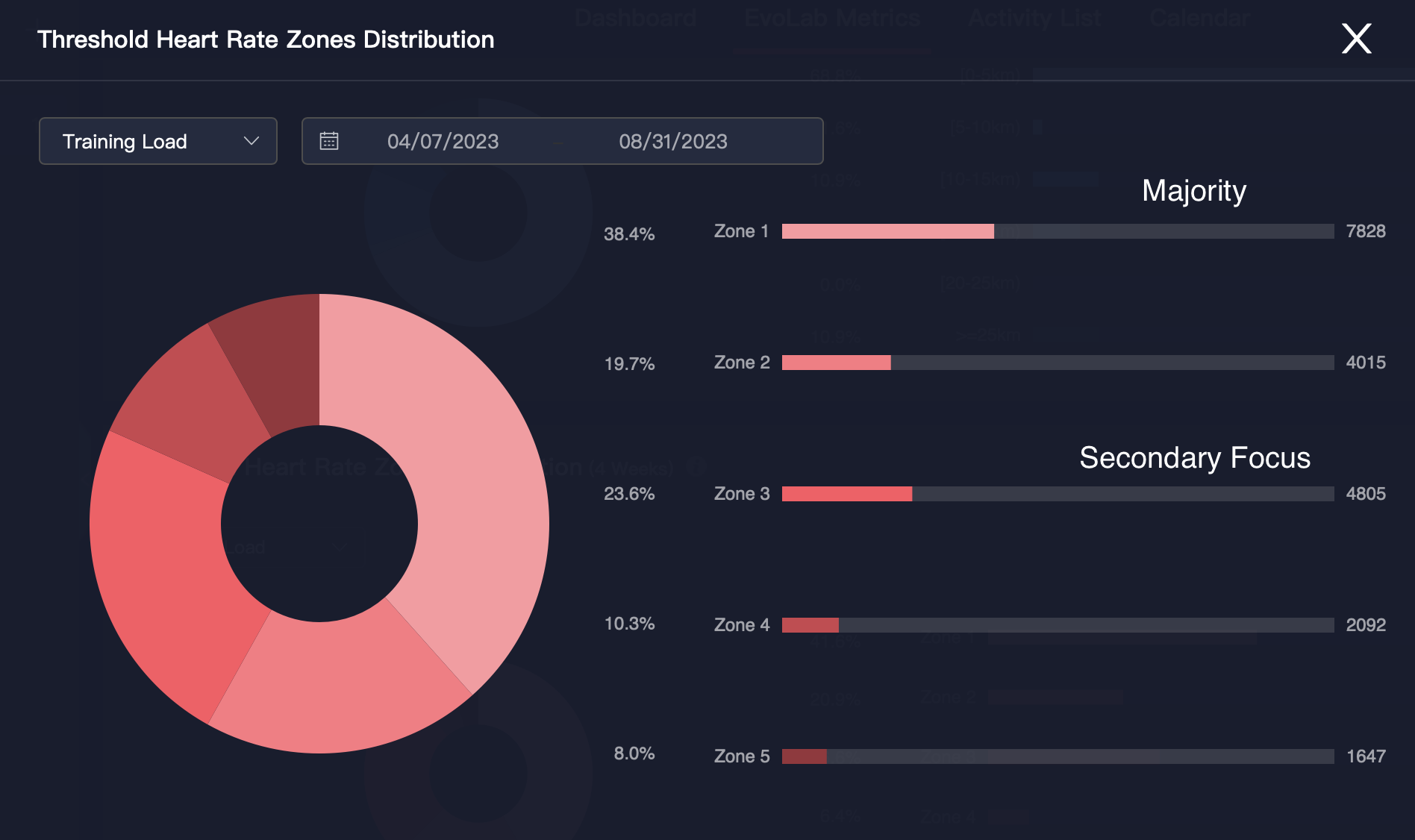
Tracking HR Zone Distribution allows athletes to quantify how hard their training is.
By monitoring their training intensity (Threshold Heart Rate Zone Distribution Chart), athletes can identify what zones they specifically target in training. Anna's chart is spot on for what you'd expect from an ultra-endurance athlete who aims to perform at the 50km distance. When looking at Zone 1 (Aerobic Endurance), Anna spent 38.4% of her time at this intensity throughout her season. Zone 1 allows athletes to add additional volume without needing prolonged recovery times. Often the intensity at which athletes perform their long runs, it provides additional Aerobic Base performance throughout the season. The 2nd focus of Anna's is her Zone 3 (Threshold). This intensity is a strong indication of how an athlete will perform over the 40-60km distance. Generally speaking, athletes can only operate at 80-85% of their threshold for this distance, so the higher you push your threshold, the faster you should be able to run granted you have the base to support it. In Anna's case, she spent most of her time ensuring her base was in place while also focusing on speed that is relevant to this distance.
Taper
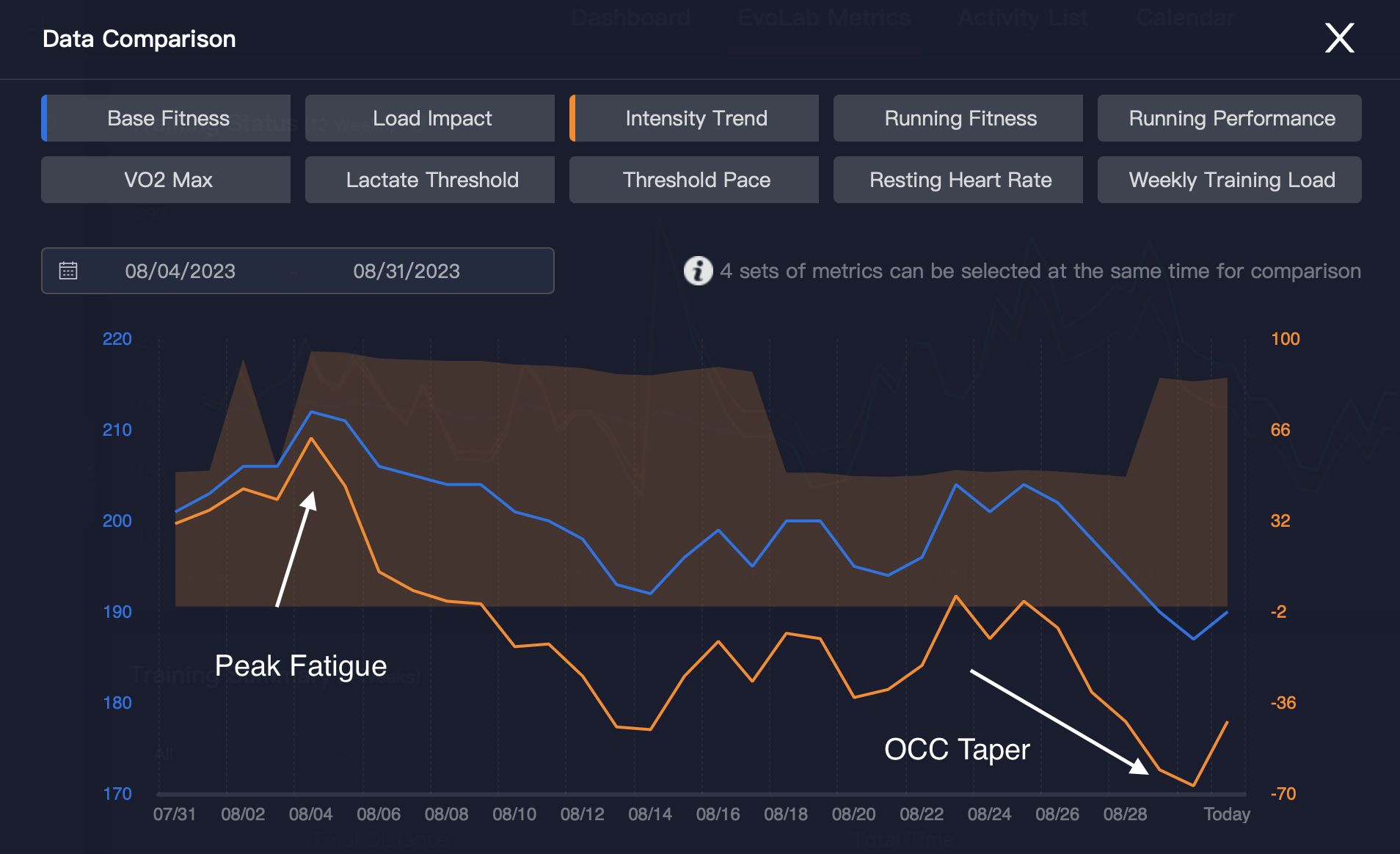
Intensity Trend lets you see your fatigue and helps dial in a taper.
A taper can be tricky for many athletes. Luckily, within the COROS ecosystem, you never have to guess again. By tracking all of your data on your runs, you'll have access to this information within the COROS App and Training Hub. From there, sports science algorithms allow you to see fitness, intensity, and how much fatigue you're carrying. Heading into race day, it's always the goal to feel fresh on the start line. By looking at your intensity trend, you can ensure you are fresh, and know your taper went to plan! In the case of Anna, she nailed her taper to perfection. Trending into the negative numbers leading into race day (negative = fresh), she was able to sit within her "performance" zone as measured by COROS EvoLab.
2023 OCC
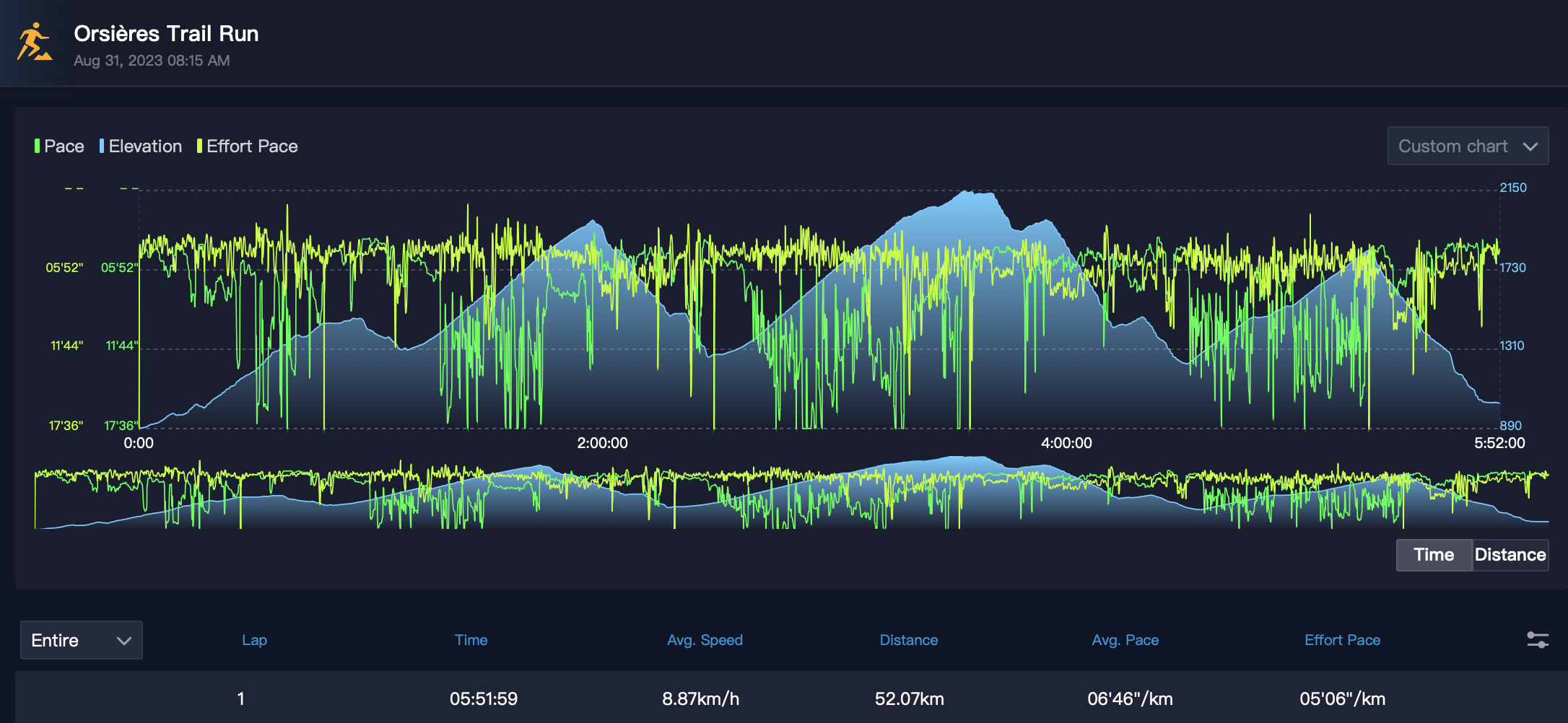
Anna was able to secure 11th overall female, and secure the top place for women 40-44. As can be seen in her data above, Anna was able to maintain an incredibly consistent Effort Pace throughout OCC. Effort Pace factors in gradient/terrain, along with an athlete's heart rate, to let them know what pace they would be running on flat road. With the technical terrain, and often rocky paths, holding an average Effort Pace of 5:06/km on such difficult trails is extremely impressive. Below we will look at how her pacing strategy unfolded throughout each of the seven checkpoints.
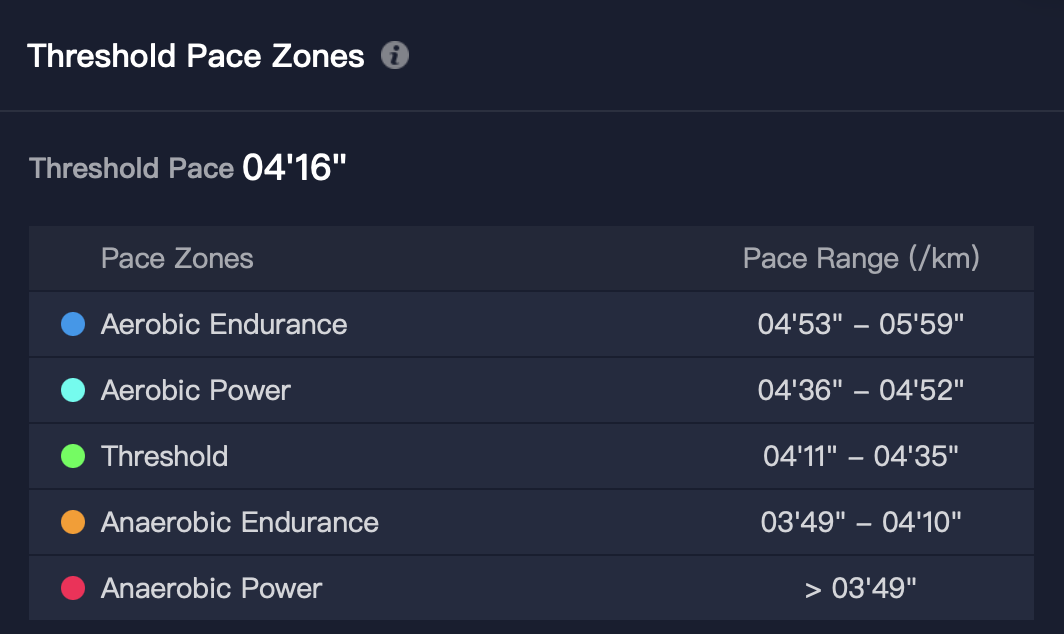
Anna's Pace Zones to show effort relative to pace.
Orsieres to Champex-Lac
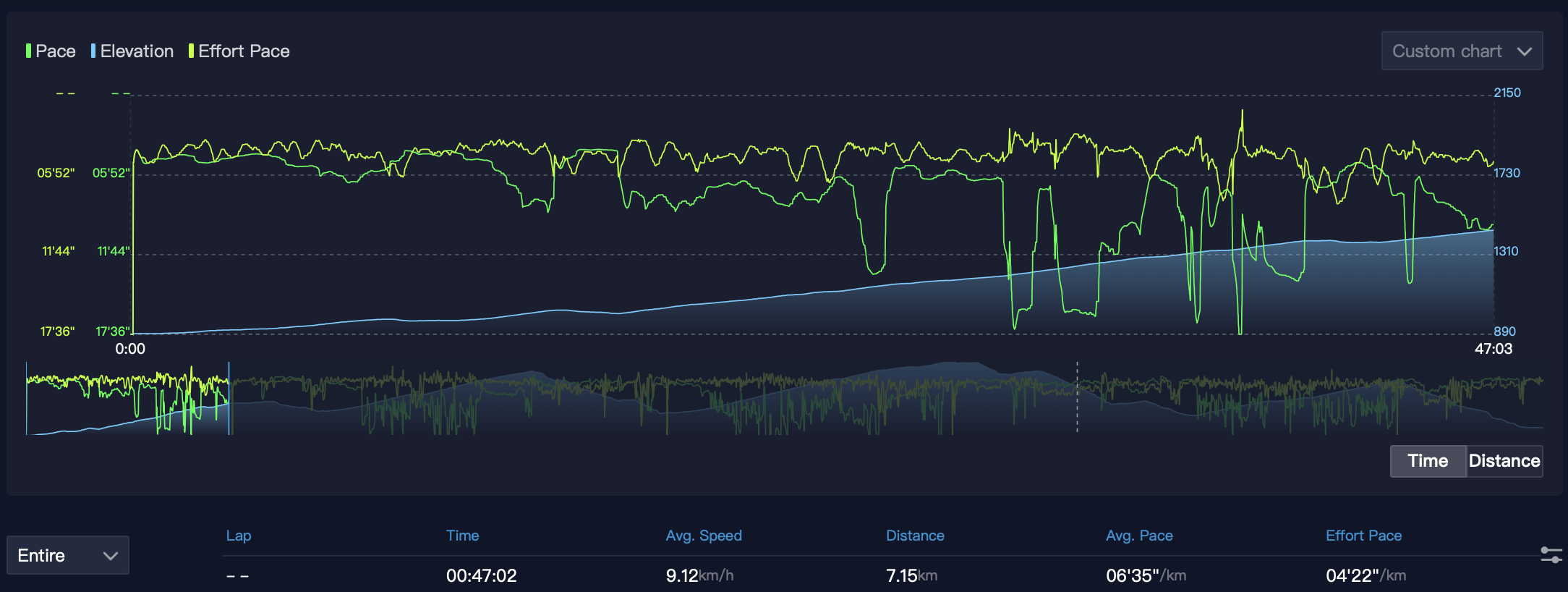
At the start of any race, adrenaline is pumping and athletes look to control this as much as possible. Oftentimes, this will lead to slightly faster opening splits before an athlete settles into their normal pace. When we look at Anna's first 7.15km (first checkpoint) the same can be seen here. While her actual pace was 6:35/km, her Effort Pace (adjusted for terrain/effort) was 4:22/km. This intensity falls within Anna's Threshold and is a pace that can only be maintained for roughly 60-80 minutes dependent on training. From the graphs above regarding her training, we know Anna has trained her threshold quite well, so this was likely a strategy Anna used to ensure she got away from the crowd and had open trails to run on early!
Champex-Lac to La Giete
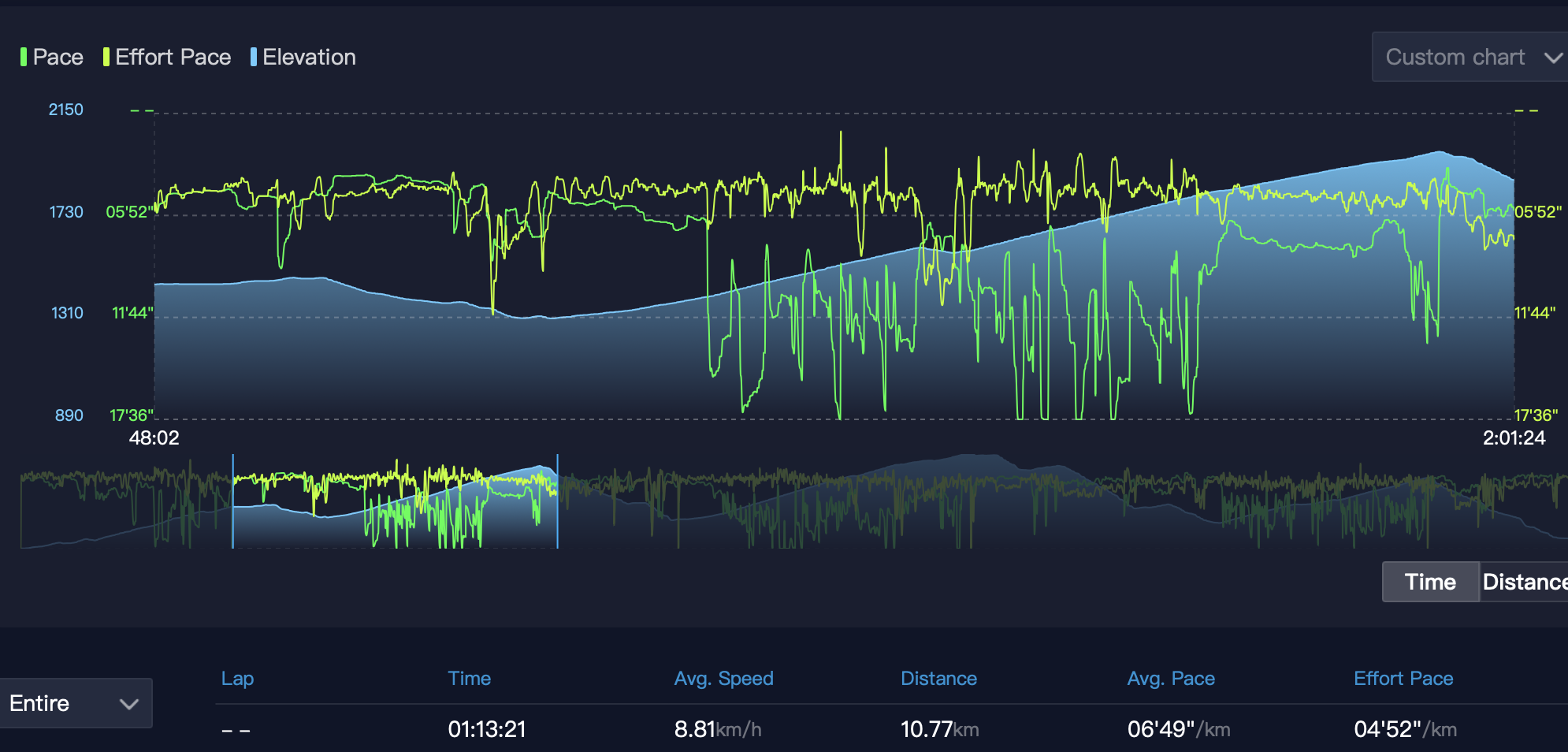
After starting the first 7 kilometers at her Threshold Pace, Anna has now settled into a more sustainable pace. Looking at her Effort Pace average here, she is holding 4:52/km which sits in her Aerobic Power zone. For most elite athletes, this is a pace they can hold for long periods of time before fatiguing. While Aerobic Endurance pace allows for your "all-day" pace, your Aerobic Power zone is the effort that is focused, but can be held for 5-8 hours for those athletes at the front of the field. In order to build your stamina at Aerobic Power, you need to build training volume along with intensity in training which Anna has done as seen in her yearly training intensity chart above.
La Giete to Trient
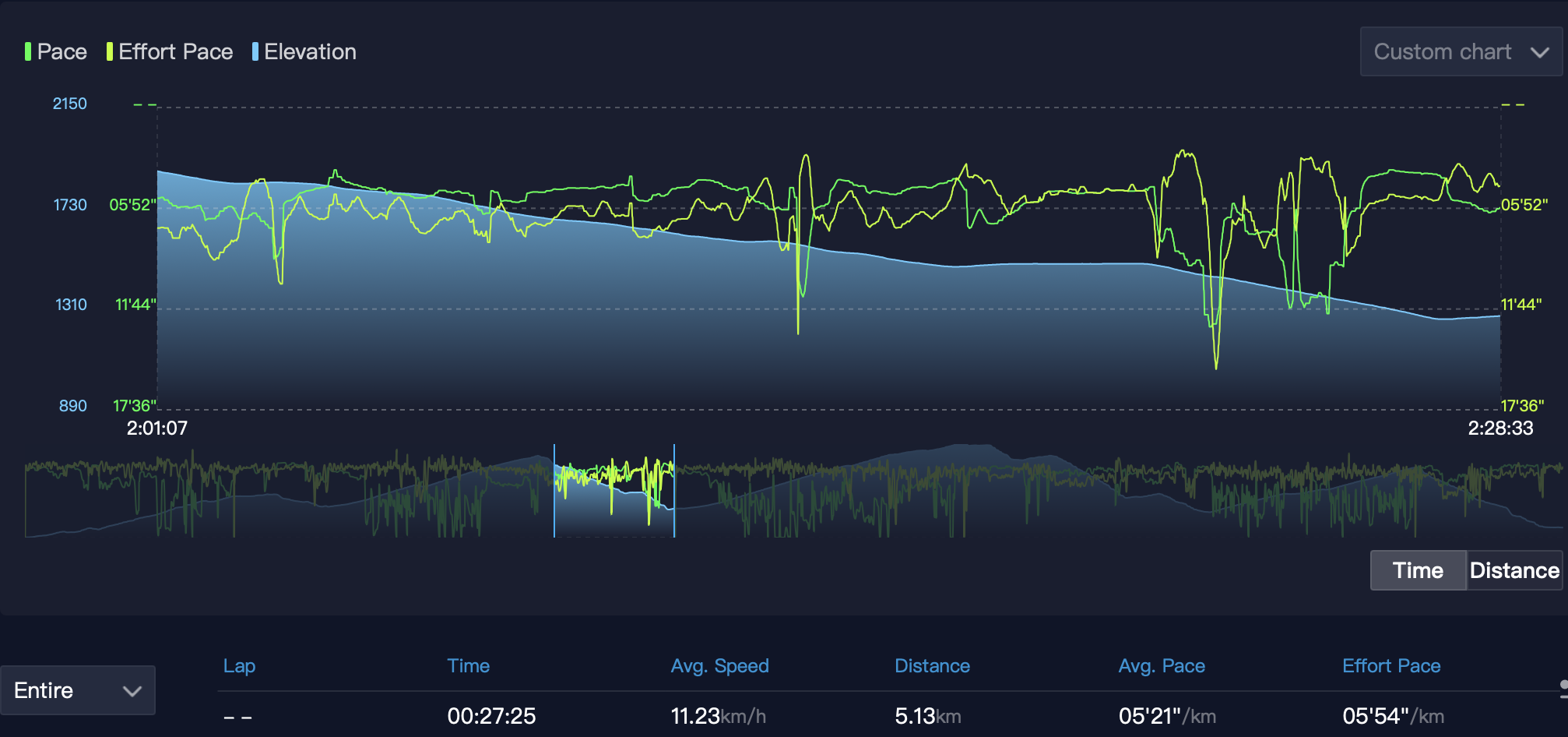
The third checkpoint is a net downhill 5k section. When looking at Anna's data, a trend is emerging from the first 3 checkpoints. Anna started the race in her Threshold zone which can only be sustained for so long before fatigue settles in. The second checkpoint was done at Aerobic Power which is sustainable, but if there is prior fatigue in the legs, recovery will be needed at some point. In this section, Anna has settled into her Aerobic Endurance pacing which allows her body to recover from the previous two sections. The thing Anna has working in her favor here is that it's a net downhill and she is running fast in real-time, but her actual effort is allowing her to recover for later portions of the race. Based on course profile and race strategy, athletes should look to see where they can push on the course, and areas where perhaps they should run a bit easier to recover.
Trient to Col de Balme
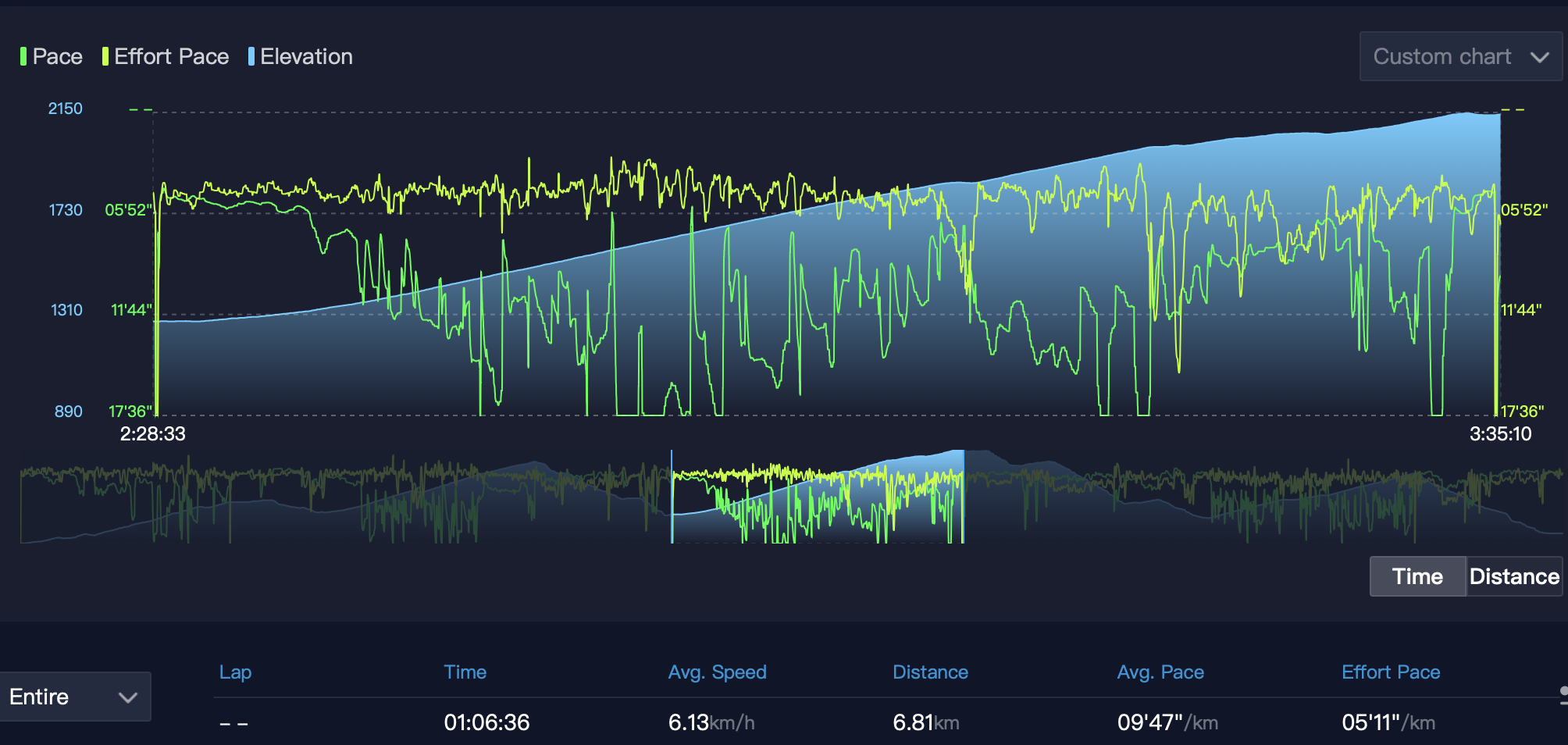
The second of three major climbs on the course, checkpoint 4 pushes athletes up to the highest point on the course (Col de Balme). As we go through this race, you can begin to see how pace/effort changes based on terrain and areas of focus. During this uphill section, Anna lifted her overall Effort Pace by 43 seconds/km. Averaging 5:11/km over the entire distance, she actually ran at 4:00/km during the steepest portions of this climb near the start of the ascent. Due to her recovery throughout checkpoint 3, she has the energy now to surge and this is where she gained quite a bit of time relative to the competition!
Col de Balme to Argentiere
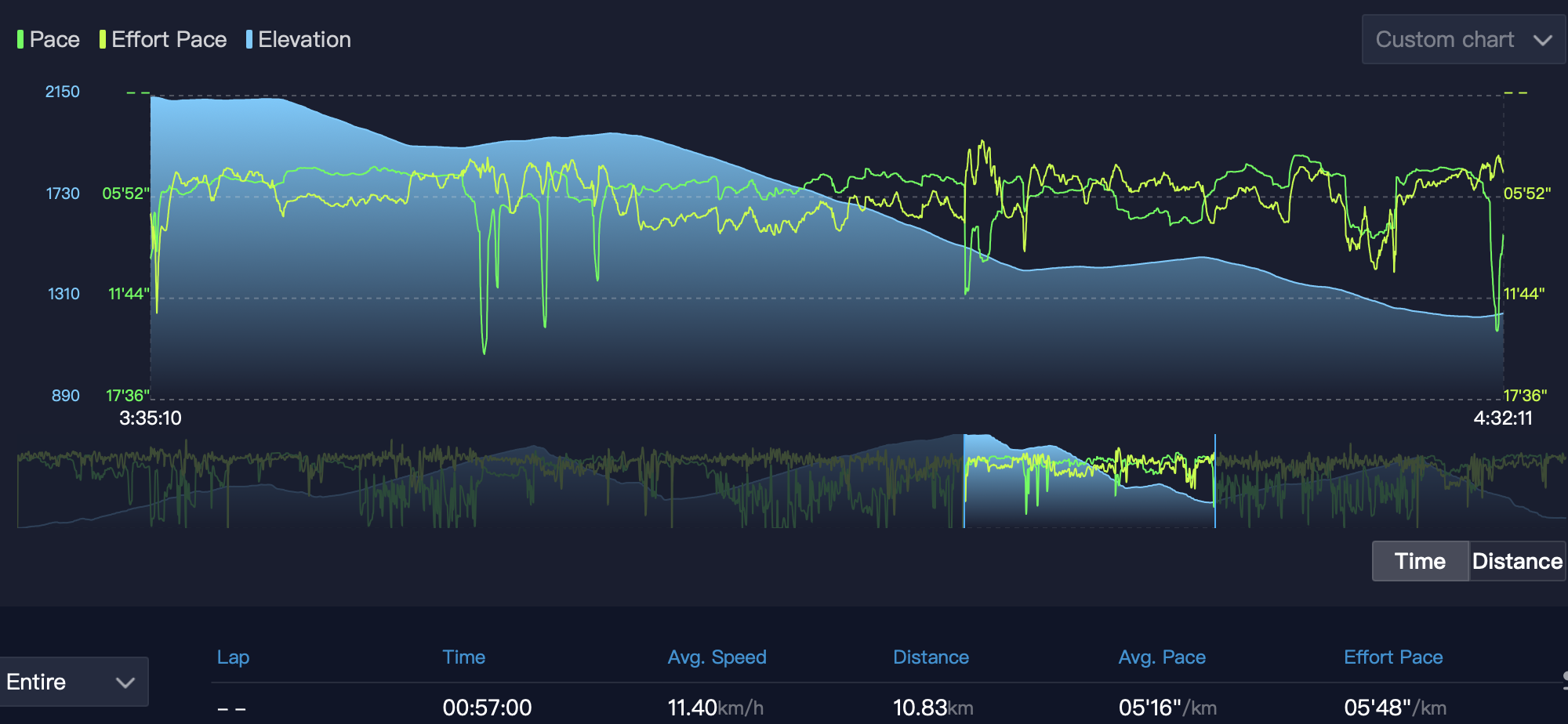
Another net downhill section and another opportunity for Anna to recover while still covering ground quickly. While she ran an actual average of 5:16/km, due to the terrain, she was able to recover at an Effort Pace of 5:48/km. Anna has made the decision to push uphill sections, and recover while still running fast on downhill sections. This tactic can be very useful for athletes to learn from as oftentimes times you can make up more time relative to the field in uphill sections. We should also note that Anna has refrained from spending too much time in threshold throughout. As an experienced athlete, Anna knows that if she goes over the threshold for a prolonged time, she will be fatigued quickly. Her pacing has been a fantastic representation of pushing where needed, but being reserved enough to not push to the point where she must slow down.
Argentiere to La Flegere
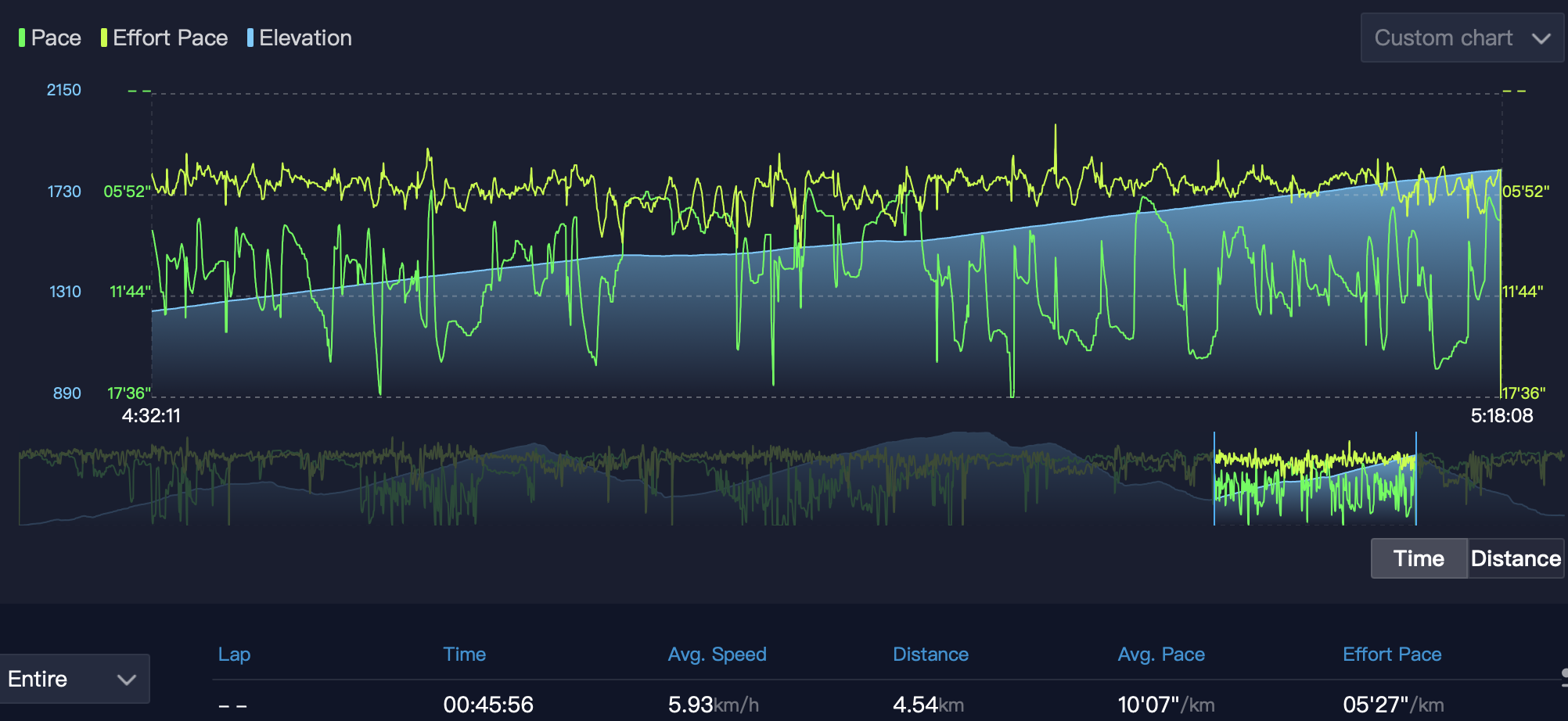
As we enter the final uphill climb, Anna continues to push the uphill sections. This was a clear race strategy as she wasn't sure how her legs would hold up on the downhills, so she decided to maximize the uphill sections. Running at 21 seconds/km faster pace compared to her last downhill, she continues to maintain a steady effort and is jumping up the rankings in the women's field.
La Flegere to Chamonix
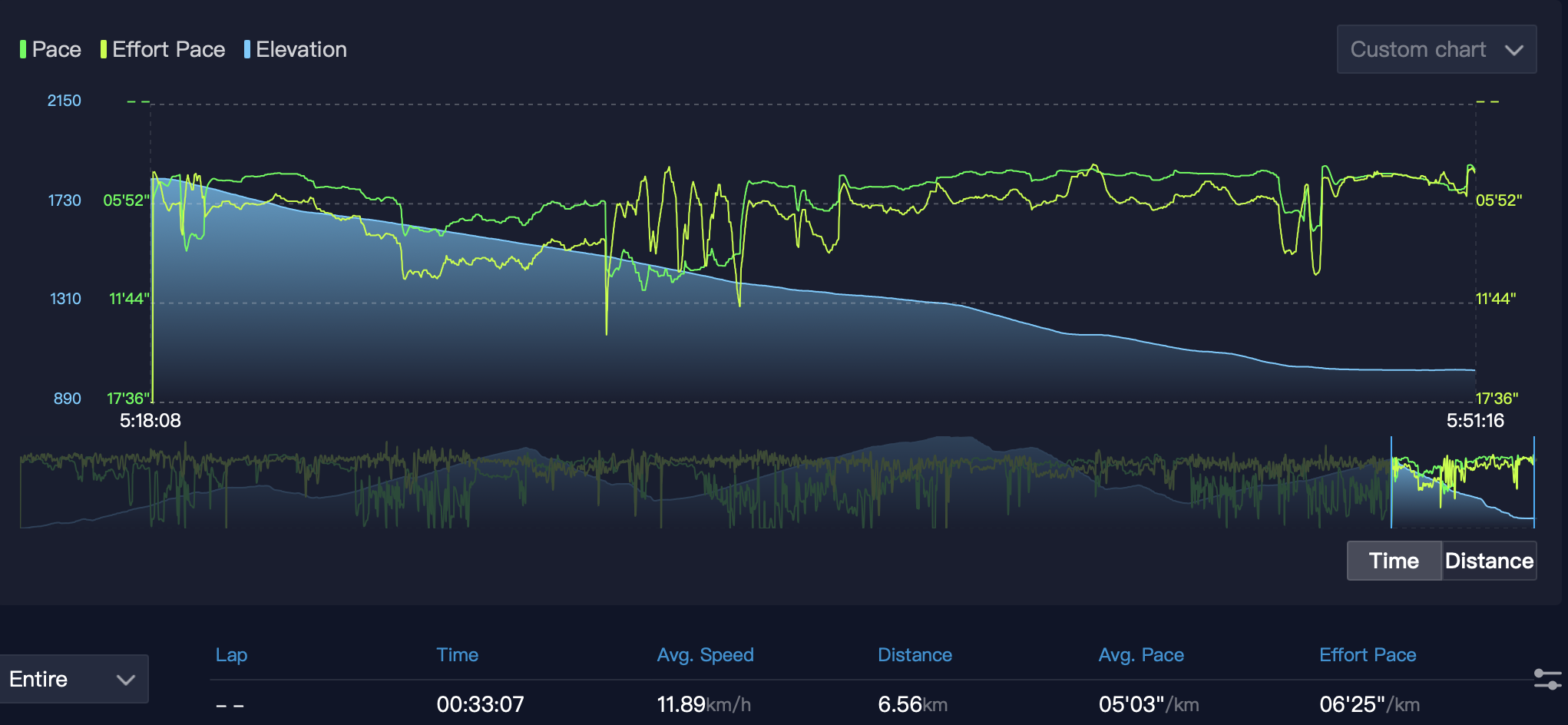
Finally, Anna made it to Chamonix and finished as the 11th overall female and 1st in the 40-44 category. As can be seen from her data, this was a very fast finish at an average pace of 5:03/km. When looking at Effort Pace, due to the downhill nature of the section, she finished at 6:25/km Effort Pace. Overall, Anna utilized a strategy of pushing the uphills and recovering on the downhills. Letting gravity keep her actual pace high, she was able to recover enough on each of the downhill sections to push as needed on the climbs!
Overall
Throughout Anna's training prior to OCC, she focused on building fitness and specifically targeting her Aerobic Endurance and Threshold abilities. As she had confidence in this skillset heading into OCC, she developed a race strategy of pushing the uphills (holding threshold at times) and then recovering at her Aerobic Endurance level on the downhills. This allowed her to maximize her performance which resulted in an 11th overall finish and top step in the 40-44 division. COROS wants to offer a big congratulations to Anna on such a remarkable training season, and OCC performance. For all runners who found this analysis interesting, we would like you to know that all of this data is collected via your watch, and you can analyze it for free on the Training Hub. As you prepare for your next major race or want to look closer at how things are going, open up the Training Hub and use this information as you head out the door and explore perfection!
/fit-in/0x18/coros-v2/images/common/logo_black.png)
